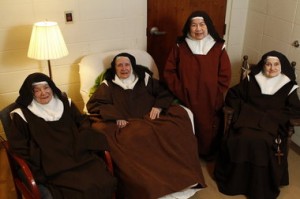 I just received this invitation from the Poor Clares of Perpetual Adoration in Arizona. This is a worthy cause and hey, if you don’t live too far from Tempe, consider joining the fun!
I just received this invitation from the Poor Clares of Perpetual Adoration in Arizona. This is a worthy cause and hey, if you don’t live too far from Tempe, consider joining the fun!
Dear friends,
March 12th is our 2nd Annual Nun Run! It is hard to believe all that the Lord has accomplished since our 1st Annual Nun Run last year! May He be praised! In October 2010, we moved to Tonopah, and in May 2011 the new Chapel will be consecrated!
The funds raised from NUN RUN 2011 will go into our Monastery Building Fund, which will be used to build our new cloistered monastery that will house 28 nuns! So how can you be a part of turning this dream into a reality?
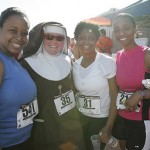 (1) Please donate at my newly created fundraising page. The competition is on to see which Sister will raise the most funds for the cause! (All in sisterly love, of course!)
(1) Please donate at my newly created fundraising page. The competition is on to see which Sister will raise the most funds for the cause! (All in sisterly love, of course!)
(2) Register to participate in the Nun Run. You can join in the fun on March 12th in Tempe, AZ…or as a shadow participant you can run wherever you are. Simply register as a shadow participant and a race shirt will be mailed to you!
(3) Become a Nun Run Fundraiser. This year we have an awesome incentive prize: All fundraisers who raise $150 or more will receive a beautiful fleece blanket with the Nun Run emblem embroidered on it. Also, largest in-state fundraiser will win “Dinner With the Nuns” at Serranos Mexican Restaurant. Largest out-of-state fundraiser will receive a nun-made Souvenir Gift Basket! The race is on . . .
Thank you, in advance, for however you are able to participate in Nun Run 2011! Above all, please keep this event’s success in your prayers.
With a promise of prayers in return,
Sr. Mary Fidelis
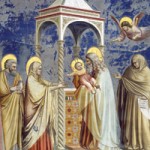 Today the Church is celebrating the World Day for Consecrated Life simultaneously with the Feast of the Presentation of the Lord in the Temple. Pope Benedict XVI is observing the two celebrations by presiding over Vespers in St. Peter’s Basilica this evening.
Today the Church is celebrating the World Day for Consecrated Life simultaneously with the Feast of the Presentation of the Lord in the Temple. Pope Benedict XVI is observing the two celebrations by presiding over Vespers in St. Peter’s Basilica this evening. It is no accident that the event coincides with the celebration of the Feast of the Presentation of the Lord in the Temple. This celebration, wrote Venerable John Paul II, is an “eloquent icon of the total offering of one’s life for all those who are called to show forth in the Church and in the world, by means of the evangelical counsels ‘the characteristic features of Jesus — the chaste, poor and obedient one.’ ”
It is no accident that the event coincides with the celebration of the Feast of the Presentation of the Lord in the Temple. This celebration, wrote Venerable John Paul II, is an “eloquent icon of the total offering of one’s life for all those who are called to show forth in the Church and in the world, by means of the evangelical counsels ‘the characteristic features of Jesus — the chaste, poor and obedient one.’ ”

 Here’s what St. Thomas Aquinas, whose feast the universal Church celebrates today, had to say on the excellence of the vow of obedience:
Here’s what St. Thomas Aquinas, whose feast the universal Church celebrates today, had to say on the excellence of the vow of obedience: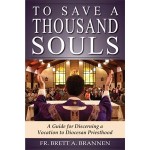 In
In 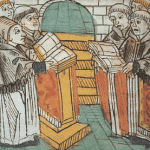 Trivia question (answer at end): What would you have if Billie Holliday came back to life and prayed the Liturgy of the Hours?
Trivia question (answer at end): What would you have if Billie Holliday came back to life and prayed the Liturgy of the Hours?